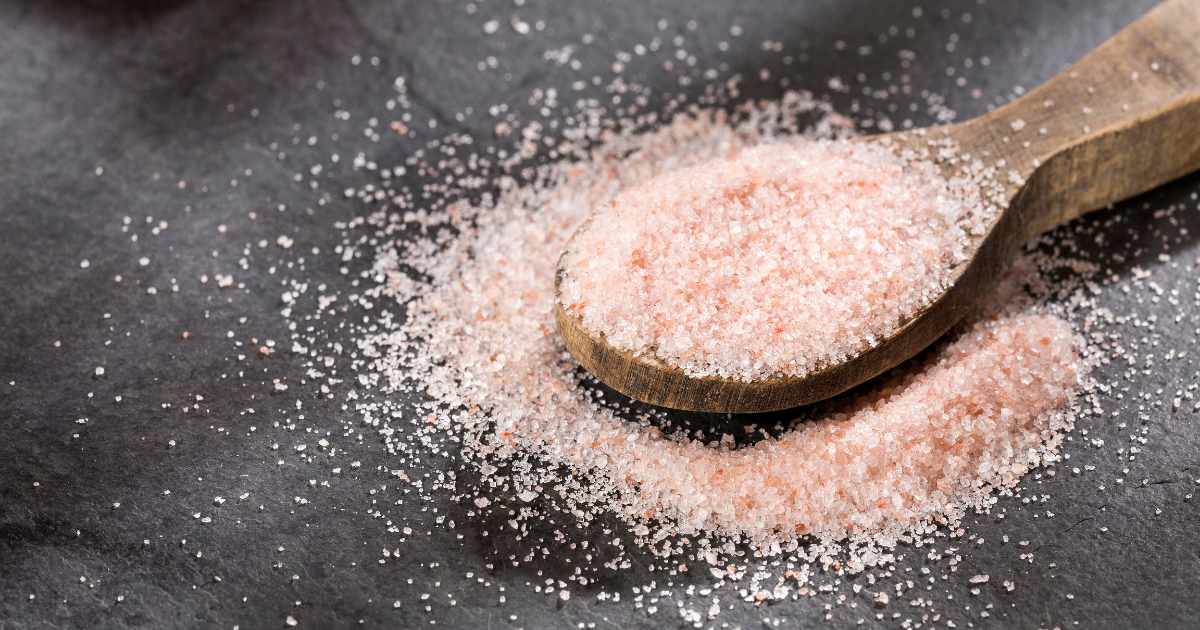During a time when drugs can be deadly and unknown, pink cocaine is one to watch out for. This street drug, popular in nightclubs and parties, can contain dangerous substances like ketamine and fentanyl, making it risky for you or someone you care about. This blog answers familiar questions about pink cocaine and points those struggling with substance abuse toward help and a fresh start.
Key blog points to remember:
- Pink cocaine, a powerful drug, combines substances like 2C-B, ketamine, MDMA, and caffeine.
- It causes more severe effects and risks than regular cocaine due to its stimulant, hallucinogenic, and dissociative properties.
- Regular use can lead to addiction, severe health problems, and the potential for overdose.
- Recovery usually begins with detoxification, followed by rehab for therapy and supportive aftercare.
- Comprehensive drug treatment programs, like those offered at Landmark Recovery, are available nationwide.
What Is Pink Cocaine?
Pink Cocaine, also known as “tuci” or “tusi,” is a pink-dyed powder that usually includes a mixture of substances like:
As an illicit (illegal) drug, the combination has gained infamy recently due to its powerful side effects and health risks.
The Backstory: Pink Cocaine’s Rise to Popularity
Pink cocaine’s history is as colorful as its hue. A report from the United Nations Office on Drugs and Crime mentions this unique blend showing up in Latin America as “cocaina rosada,” “tuci” or “tucibi.” Often, it includes ketamine rather than Cocaine or 2C-B, which the street names hint at.
A Pretty “Party” Drug
Ketamine has a history of non-medical use dating back to the 1970s, often drawing young people to it due to its psychedelic effects. The Drug Enforcement Agency (DEA) reports that it’s been pitched as offering a powerful, joyful high that seems perfect for parties or clubs. But beneath this bright, short-term facade hides a dangerous truth: pink cocaine is a powerful drug with significant risks, including addiction.
Ketamine and MDMA (ecstasy), another drug found in pink cocaine, are drugs grouped under the category of hallucinogens, which the National Survey on Drug Use and Health (NSDUH) estimates that 2.6% of people aged 12 and older use.
A Controlled Substance in the U.S.
In the United States, Ketamine is listed as a Schedule III non-narcotic substance under the Controlled Substances Act (CSA) due to its potential for abuse and addiction. Although it’s used in medical settings for short-term sedation, anesthesia, and treatment-resistant depression, regular or extended use can lead to physical dependence and addiction.
This detailed history sheds light on why pink cocaine has grabbed the attention of addiction experts. It also explains why young people, who may be drawn to its reputation as a party drug, are at particular risk. Hallucinogens like Ketamine and MDMA (found in pink cocaine) are used by over 7% of people aged 18-25, according to the National Survey on Drug Use and Health (NSDUH).
This alarming statistic underlines the urgency to understand and tackle the issue of pink cocaine use.
Physical and Mental Effects
Many abused substances have specific effects on the body and the mind, and pink cocaine is no exception. Pink cocaine’s physical and mental impacts are multifaceted due to its mixture of powerful drugs. Let’s discuss the short- and long-term effects.
Physical Effects
Pink cocaine’s physical effects can be alarming and severe, causing:
- Increased heart rate
- High blood pressure
- Nausea and vomiting
Due to the stimulants in the drug mixture, users may also experience heightened energy and decreased need for sleep. However, these short-term effects can lead to long-term health issues, such as cardiovascular problems and nasal passage damage if the substance is snorted.
Mental Impact
The psychological impact of pink cocaine can be equally disturbing. The mixture of 2C-B and MDMA can cause the following:
- Hallucinations
- An altered perception of reality
- Intense mood swings
Over time, regular use can lead to severe mental health issues like:
- Depression
- Anxiety
- Addiction
These adverse effects signal that pink cocaine is far from a harmless party drug. If you or a loved one struggles with pink cocaine use, help is within reach.
Pink Cocaine vs. Cocaine: Are They the Same?
Although they share a part of their name, pink cocaine and traditional cocaine have distinct differences. Understanding these differences is vital, as it dispels myths and inaccuracies about these substances. Let’s explore how they differ in the following:
- Composition
- Side effects
- Health risks
Composition
While cocaine is derived from the coca plant, pink cocaine, or “tuci,” is a synthetic mixture, often dyed pink. This cocktail of powerful drugs leads to various effects, some similar to traditional cocaine, but others are vastly different due to the other substances in the mix.
Side Effects
Cocaine delivers an intense, euphoric high, boosting energy and causing chattiness and a sense of invincibility in users. Pink cocaine presents a mixed bag of hallucinogenic and stimulant effects due to its cocktail composition. 2C-B and MDMA often account for the hallucinogenic effects, while caffeine and occasionally small cocaine amounts drive the stimulant effects.
Risks
The risks between both substances are high, but they differ significantly. Cocaine’s risks include heart disease, stroke, and addiction. Pink cocaine presents unique risks due to its uncertain composition, including unpredictable effects, the potential for overdose, and severe withdrawal symptoms. The unknown nature of Pink cocaine’s makeup can also lead to dangerous interactions with other substances like fentanyl, a deadly synthetic opioid.
Whether it’s Pink Cocaine or traditional cocaine, abusing either drug can destroy one’s health and life. If you or someone you care about are struggling with substance abuse, seeking professional help is crucial. Landmark Recovery offers a range of personalized pink cocaine treatment options, giving you the tools to choose recovery and your life over drugs.
Call 888-448-0302 today to talk to one of our Patient Navigators any time, day or night.
Treating Pink Cocaine Addiction
Overcoming pink cocaine addiction is no easy feat, but it’s possible with the right help and support. At Landmark Recovery, we understand the unique challenges that pink cocaine addiction presents and have tailored our treatment programs to meet these specific needs.
Detoxification
The first step in treating pink cocaine addiction is medical detoxification. Medical professionals closely monitor patients 24/7 to manage withdrawal symptoms and ensure safety.
Rehabilitation
Following detoxification, recovering pink cocaine addiction patients are encouraged to transition into a rehabilitation program, preferably residential treatment. This recovery phase allows patients to engage in various therapeutic activities, including individual counseling, group therapy, and cognitive-behavioral therapy, all designed to explore the root causes of addiction, such as co-occurring mental health issues or childhood trauma. It also teaches patients the skills to maintain sobriety.
Medication-Assisted Treatment (MAT)
Medication-assisted treatment (MAT) may be recommended to help some people manage pink cocaine cravings and withdrawal symptoms. By combining FDA-approved medications with behavioral therapy, MAT can significantly improve the odds of long-term recovery.
Aftercare
After completing a drug treatment program, aftercare services, such as alumni events, sober living home referrals, and Recovery Coaching, offer ongoing support to help you navigate the challenges of long-term recovery.
Treatment for Pink Cocaine addiction, however, can be a challenging journey, but you don’t have to do it alone. At Landmark Recovery, we guide you every step of the way, even after you leave our rehab center. To learn more, call our confidential admissions line at 888-448-0302 today. We’re available to help you anytime, day or night.
Landmark Recovery’s Pink Cocaine Rehab Programs
Beating addiction is not a one-size-fits-all journey. People have unique needs, so Landmark Recovery offers various treatment programs to address diverse patient needs with understanding and respect.
From medical detox to residential treatment, we offer complete services to tackle pink cocaine addiction head-on. For patients who can’t commit to residential care due to home or work obligations, we provide an outpatient program that offers the flexibility to balance treatment with their daily routine.
Find Rehab Nearby
Finding the right help should be easy. To achieve this, we’ve opened alcohol and drug rehab centers in multiple states across the U.S.:
Each rehab center offers a nurturing recovery environment to help you return to life on your terms. Give us a call at 888-448-0302 anytime, day or night. Let our treatment experts guide you toward a life free from the bonds of addiction.
Back to Top

Choose Recovery Over Addiction
We're here 24/7 to help you get the care you need to live life on your terms, without drugs or alcohol. Talk to our recovery specialists today and learn about our integrated treatment programs.





